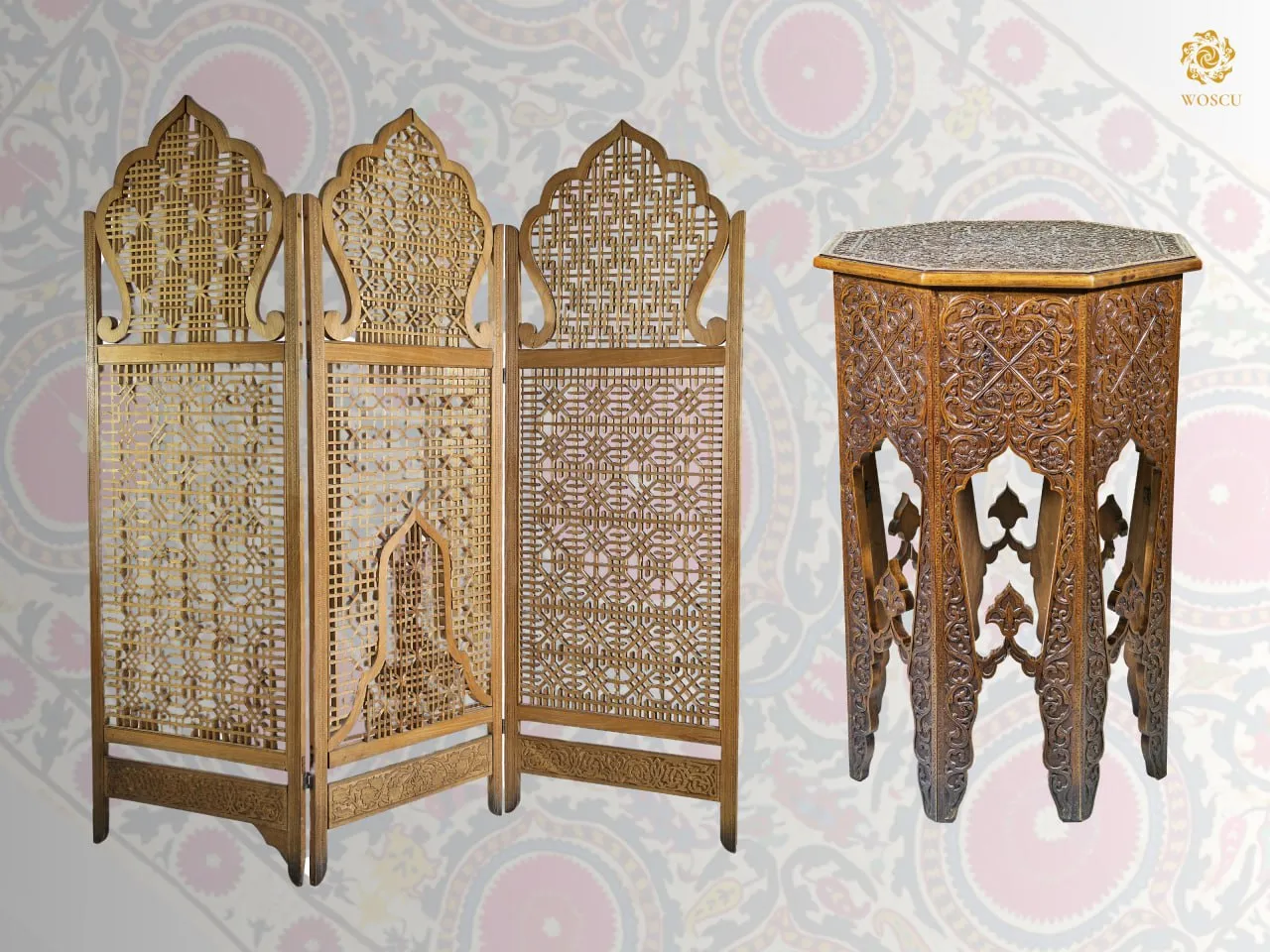Items of this art include various household goods (screens, carved and painted multifaceted tables of elongated forms, low tables khon-tahta, book-holders – laukhs, pencil boxes, cases, musical instruments), as well as elements of architectural structures (columns, ceiling beams, doors). The wide use of wooden carved columns, doors, and other architectural elements was very popular in the architecture of the capitals of the Uzbek khanates – Khiva, Bukhara, Kokand, and also in Samarkand and Tashkent.
In wood carving techniques were used such as background, in which a flat-relief pattern was formed by sampling the background, and trihedral-notched, without a background, with an incision pattern. The ornamental repertoire, as in the ganch decor, was based on geometric (parogori, baghdadi) and stylized plant (islimi) patterns.
The State Museum of Arts holds examples of wood carving dated to the second half of the 19th – first half of the 20th centuries, created by the masters of Tashkent, Khiva, Kokand, Samarkand and Bukhara. Perhaps the most interesting centre of this kind of applied art is Khiva. In the Museum exposition we can enjoy remarkable examples of columns and doors from Khiva. Members of the Palvanov dynasty are famous representatives of the Khivan carving school. The golden age of their art falls between the 19th and early 20th centuries. The best traditions of the Kokand school of carving and painting on wood are demonstrated by the master K. Haydarov, whose works, distinguished by exquisitely thin plant ornament, are also represented in the Museum exposition. We can appreciate the Tashkent school of carving and painting on wood with the remarkable works of S. Khodzhayev, M. Kasymov, and A. Faizullayev.
You can learn more about this topic in the book-album “The Collection of the State Museum of Arts of Uzbekistan” (Volume XIII) from the series “Cultural legacy of Uzbekistan in the world collections”.
The general sponsor of the project is the oilfield services company Eriell-Group.
_1_1.webp)

